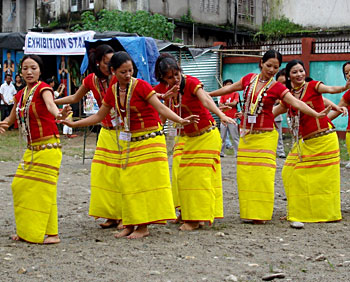 Dedicated to Lord Surya, the day of Makar Sankranti marks the end of the winter solstice and the start of longer days as the sun enters the zodiac sign of Capricorn or Makara. Thus, begins the 6 months long sacred period for the Hindus known as Uttarayana, as the sun begins its northward journey from this day. The history of Makar Sankranti is seeped with the ancient culture and traditions of India. The festival also commemorates the beginning of the harvest season.
Dedicated to Lord Surya, the day of Makar Sankranti marks the end of the winter solstice and the start of longer days as the sun enters the zodiac sign of Capricorn or Makara. Thus, begins the 6 months long sacred period for the Hindus known as Uttarayana, as the sun begins its northward journey from this day. The history of Makar Sankranti is seeped with the ancient culture and traditions of India. The festival also commemorates the beginning of the harvest season.
Significance of Makar Sankranti
Makar Sankranti is celebrated with great fervour and enthusiasm among the people of India. The festival is mainly dedicated to the Hindu God, Lord Surya, who has been mentioned in religious texts since Vedic period. The significance of Lord Surya is particularly mentioned in Gayatri Mantra, a sacred hymn of Hinduism and in scriptures from the Rig Veda. On this day, prayers to the Sun God are offered as a gratitude for their successes and prosperity.
The spiritual and religious practises of taking a dip in the holy waters of the Ganga, Yamuna, Godavari, Krishna and Kaveri rivers are believed to result in merit or absolution of past sins. Makar Sankranti also observes Kumbh Mela, which is one of the largest mass pilgrimages of the world that occurs every 12 years. During this event, the devotees gather at the confluence of Prayag, where the River Ganga meets the Yamuna River, and offer their prayers to the Sun God. This tradition is attributed to the early Indian philosopher, Adi Shankaracharya.
Few of the other integral parts of the festival are the fairs, bonfires, feasts, dancing and flying kites. Since, Makar Sankranti also welcomes the harvest festival, when the crops like rabi are in the earliest stages of their agricultural cycle and most of the crops have been sown and the hard work in the fields is mostly over. It is during this time that signifies a period to socialize and bond among families and taking care of the cattle while celebrating around the bonfire or by flying kites.
Other than these, preparation of sweets made from jaggery and sesame are also quite significant as they are symbolic of the peaceful harmony and joy it brings, despite the uniqueness and differences between individuals.
 Celebration of Makar Sankranti in Different Parts of India
Celebration of Makar Sankranti in Different Parts of India
The festival of Makara Sankranti is one of the few ancient Indian festivals that are observed according to the solar cycles, while most festivals are set by the lunisolar Hindu calendar. It is a pan- Indian festival that is celebrated in many parts of the Indian subcontinent with some regional variations and is known by different names with separate customs in different parts of the region. The regional variations of the festivals are elaborately discussed below:
Suggi or Sankranti: In the state of Karnataka, Suggi is the harvest festival for the farmers. On this auspicious day, a ritual called Ellu Birodhu is followed, where a mixture of white sesame seeds with dry coconuts, fried groundnuts and jaggery is used as a Sankranti offering. A piece of sugarcane is also added on the side as it is predominant in those parts. These kind of sugary sweet items are exchanged among the women in Karnataka and in some parts; a newly married woman is required to give away bananas for 5 years to another married woman. This should be done from the first year of the marriage and the number of bananas should be increased in multiples of 5. Another important ritual of the state called the Kichchu Haayisuvudu is to display the cattle, the cows and bulls, in colourful costumes in an open field.
In the states of Andhra Pradesh and Telangana, the festival of Sankranti is celebrated for four days: Bhogi, Makar Sankranti, Kanuma and Mukkanuma. The four days extravaganza starts with the burning of old derelict items in a bonfire followed by celebrating the festival by wearing new clothes and offering traditional food to the deceased ancestors. Ornate designs and patterns called rangoli are made on the floor and are decorated with flowers, colours and small, hand-pressed piles of cow dung. The farmers show off their cattle with honour and people unite together to celebrate the festival.
Magh Bihu: Marked by feasts and bonfires, Magh Bihu is celebrated in the state of Assam and features traditional Assamese games like tekeli bhonga or pot breaking and buffalo fighting. During Magh Bihu, people of Assam make cakes of rice with various names such as shunga pitha, til pitha etc. and some other sweets of coconut called laru or laskara.
Khichdi: In Bihar and Jharkhand, the festival is celebrated as Makar Sankranti or Sakraat or Khichdi. People start their day by worshiping and putting sesame seeds into fire followed by eating dahi-chuda, a dish made of beaten rice served with a larger serving of curd, with cooked kohada or red pumpkin that is prepared specially with sugar and salt but no water. The meal is generally accompanied by tilkut and lai.
Uttarayan: In Gujarat, it is celebrated as Uttarayan, and the people fly kites during this time. The Hindu Sindhi community in western regions of India celebrate Makar Sankranti as Tirmoori.
Poush Sankranti: Celebrated as Poush Sankranti in West Bengal, during which time the freshly harvested paddy and the date palm syrup in the form of khejurer gur or date palm jaggery is used in a preparation of variety of traditional Bengali sweets mainly pitha, which is made with rice flour and coconut.
The festival of Makar Sankarnti is also celebrated in states like Tamil Nadu as Thai Pongal, in Punjab as Maghi, and as Sakraant in Haryana, Delhi, Goa, Rajasthan and western Madhya Pradesh. The auspicious occasion of Makar Sankranti is regarded as the holy phase of transition and is celebrated with huge fanfare and zeal all across the country.



















